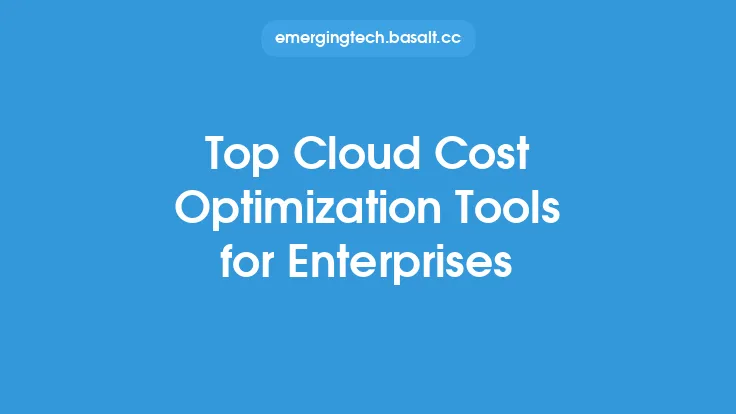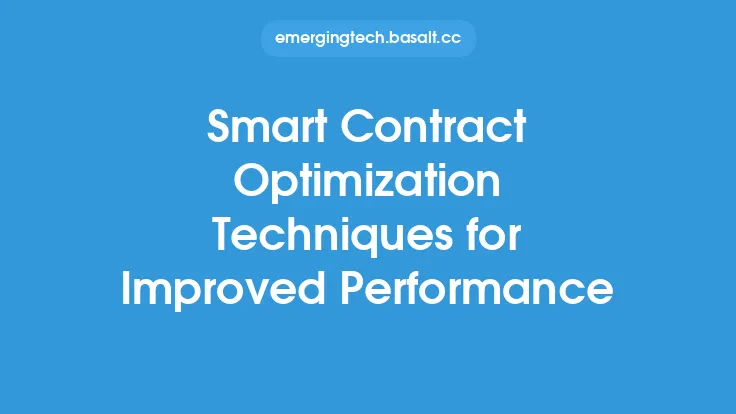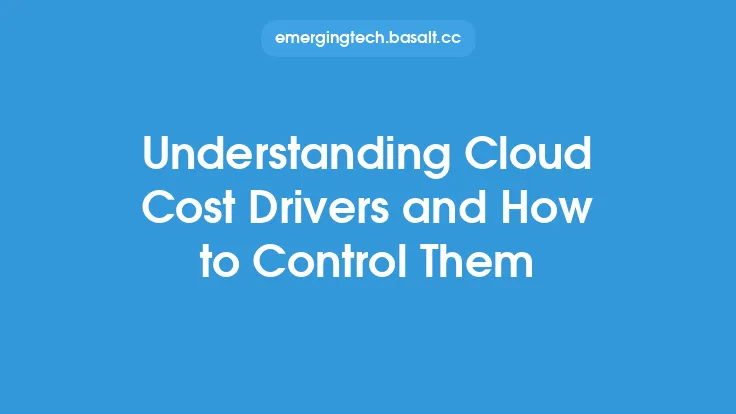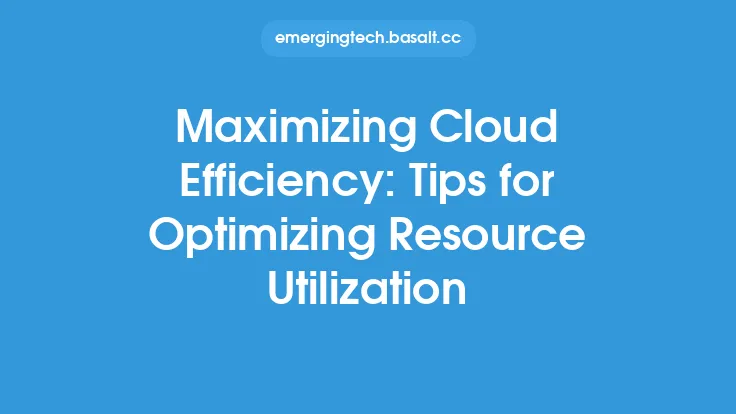As organizations continue to migrate their workloads to the cloud, managing cloud costs has become a critical aspect of their overall IT strategy. Cloud cost optimization is the process of analyzing and adjusting cloud resource usage to minimize waste, reduce costs, and improve return on investment (ROI). In this article, we will delve into the various cloud cost optimization techniques that can help organizations achieve improved ROI.
Introduction to Cloud Cost Optimization
Cloud cost optimization is a complex process that requires a deep understanding of cloud pricing models, resource utilization, and application requirements. It involves identifying areas of inefficiency, optimizing resource allocation, and implementing cost-saving strategies. The goal of cloud cost optimization is to ensure that cloud resources are utilized efficiently, effectively, and at the lowest possible cost. This can be achieved by implementing various techniques, including right-sizing resources, reserved instances, spot instances, and automated scaling.
Understanding Cloud Pricing Models
Cloud pricing models can be complex and vary depending on the cloud provider. The most common pricing models are pay-as-you-go, reserved instances, and spot instances. Pay-as-you-go pricing models charge customers based on their actual usage, while reserved instances provide a discounted rate for committed usage. Spot instances, on the other hand, offer unused resources at a discounted rate, but with the risk of interruption. Understanding these pricing models is crucial for cloud cost optimization, as it enables organizations to choose the most cost-effective option for their workloads.
Identifying Inefficiencies and Waste
Identifying inefficiencies and waste is a critical step in cloud cost optimization. This can be achieved by monitoring resource utilization, identifying unused or underutilized resources, and analyzing cost allocation. Organizations can use cloud management platforms, such as AWS CloudWatch or Azure Cost Estimator, to monitor resource utilization and identify areas of inefficiency. Additionally, they can use tagging and categorization to allocate costs to specific departments, teams, or projects.
Right-Sizing Resources
Right-sizing resources is a key technique in cloud cost optimization. It involves analyzing resource utilization and adjusting resource allocation to match actual usage. This can be achieved by downsizing or upsizing resources, depending on the workload requirements. For example, if a workload requires a high amount of CPU, but low memory, organizations can right-size their resources by choosing an instance type that matches their workload requirements. Right-sizing resources can help organizations reduce waste, lower costs, and improve resource utilization.
Reserved Instances and Spot Instances
Reserved instances and spot instances are two cost-saving strategies that can help organizations reduce their cloud costs. Reserved instances provide a discounted rate for committed usage, while spot instances offer unused resources at a discounted rate. Organizations can use reserved instances for workloads that have predictable usage patterns, while spot instances can be used for workloads that are flexible and can be interrupted. By using reserved instances and spot instances, organizations can reduce their cloud costs and improve their ROI.
Automated Scaling and Scheduling
Automated scaling and scheduling are two techniques that can help organizations optimize their cloud resource utilization. Automated scaling involves dynamically adjusting resource allocation based on workload requirements, while scheduling involves allocating resources based on a predefined schedule. For example, organizations can use automated scaling to increase resource allocation during peak hours and decrease it during off-peak hours. Similarly, they can use scheduling to allocate resources based on a predefined schedule, such as allocating resources only during business hours.
Cloud Cost Governance Framework
A cloud cost governance framework is a set of policies, procedures, and standards that help organizations manage their cloud costs. It involves establishing clear roles and responsibilities, defining cost allocation policies, and implementing cost monitoring and reporting. A cloud cost governance framework can help organizations ensure that their cloud costs are transparent, predictable, and aligned with their business objectives.
Cloud Cost Monitoring and Analytics
Cloud cost monitoring and analytics are critical components of cloud cost optimization. They involve monitoring resource utilization, tracking costs, and analyzing cost allocation. Organizations can use cloud management platforms, such as AWS CloudWatch or Azure Cost Estimator, to monitor resource utilization and track costs. Additionally, they can use analytics tools, such as Tableau or Power BI, to analyze cost allocation and identify areas of inefficiency.
Best Practices for Cloud Cost Optimization
There are several best practices that organizations can follow to optimize their cloud costs. These include:
- Monitoring resource utilization and tracking costs
- Right-sizing resources to match actual usage
- Using reserved instances and spot instances for cost savings
- Implementing automated scaling and scheduling
- Establishing a cloud cost governance framework
- Analyzing cost allocation and identifying areas of inefficiency
By following these best practices, organizations can optimize their cloud costs, reduce waste, and improve their ROI.
Conclusion
Cloud cost optimization is a critical aspect of cloud computing that requires a deep understanding of cloud pricing models, resource utilization, and application requirements. By implementing various techniques, such as right-sizing resources, reserved instances, spot instances, and automated scaling, organizations can optimize their cloud costs and improve their ROI. Additionally, establishing a cloud cost governance framework, monitoring resource utilization, and analyzing cost allocation can help organizations ensure that their cloud costs are transparent, predictable, and aligned with their business objectives. By following best practices and staying informed about the latest cloud cost optimization techniques, organizations can maximize their cloud investments and achieve improved ROI.





